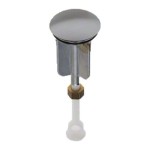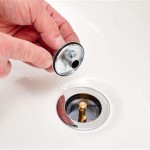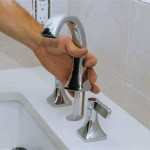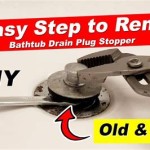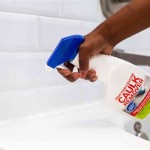Bathtubs Designed for Handicapped Persons: Accessibility, Safety, and Options
Bathtubs designed for handicapped persons, more accurately described as bathtubs designed for those with limited mobility, represent a significant advancement in accessible bathroom design. These specialized tubs aim to provide a safe, comfortable, and independent bathing experience for individuals who may face challenges using conventional bathtubs. The features incorporated into these tubs address a range of mobility issues, allowing users to maintain their hygiene and well-being with dignity and reduced risk of falls or injury.
The design and functionality of accessible bathtubs go beyond simple accommodations. They are engineered with specific considerations for users who may have difficulty stepping over a tub wall, sitting down and standing up safely, maintaining balance, or navigating the bathing process independently. This necessitates a multifaceted approach, encompassing features such as low-entry thresholds, integrated seating, grab bars, and user-friendly controls. Furthermore, water temperature regulation and anti-scald mechanisms are crucial components, enhancing safety and preventing potential burns.
The selection of an appropriate accessible bathtub requires careful consideration of the user's individual needs, physical limitations, and the available space within the bathroom. Several types of accessible bathtubs exist, each offering a unique set of features and benefits. Understanding these options is essential for making an informed decision that effectively addresses the user's specific requirements and promotes independence in bathing.
Walk-In Bathtubs: Minimizing the Risk of Falls
Walk-in bathtubs are arguably the most recognizable type of accessible bathtub. Their defining characteristic is a watertight door built into the side of the tub, allowing the user to enter and exit without stepping over a high tub wall. This low-entry threshold significantly reduces the risk of falls, which is a primary concern for individuals with mobility impairments. Once inside the tub, the user can close and latch the door, creating a watertight seal before beginning to fill the tub with water.
These bathtubs often incorporate a built-in seat, typically positioned at a comfortable height to facilitate easy sitting and standing. The seat provides crucial support and stability, reducing strain on the user's joints and muscles. The seat's design is carefully considered to ensure adequate space and comfort, while also allowing for easy access to the tub's controls and features. Many walk-in tubs offer optional features such as hydrotherapy jets, air massage systems, and aromatherapy diffusers, further enhancing the bathing experience and providing therapeutic benefits.
The watertight door is a critical component of the walk-in bathtub. It must be robustly constructed and equipped with a reliable latching mechanism to prevent leaks. The seal surrounding the door must also be durable and resistant to wear and tear, ensuring long-term performance and water tightness. Different door configurations are available, including inward-swinging and outward-swinging doors, as well as side-entry and front-entry options. The choice of door configuration depends on the bathroom's layout and the user's specific accessibility requirements.
The filling and draining process in a walk-in bathtub is typically longer than in a conventional bathtub due to the need to fill the tub after the user is seated and to drain it before the door can be opened. To mitigate this inconvenience, many walk-in bathtubs are equipped with rapid-fill faucets and high-speed drains. These features significantly reduce the waiting time, allowing the user to enjoy their bathing experience more quickly and efficiently.
Safety features are paramount in walk-in bathtub design. Non-slip surfaces are incorporated into the floor and seat of the tub to prevent slipping and sliding. Grab bars are strategically placed around the tub to provide additional support and stability. Furthermore, thermostatic mixing valves are often used to regulate water temperature, preventing scalding and ensuring a comfortable and safe bathing experience.
Transfer Bathtubs: Facilitating Lateral Transfers
Transfer bathtubs are designed to facilitate lateral transfers from a wheelchair or other mobility device to the bathtub seat. These tubs typically have a wider side or a sliding door that allows for easy access and positioning. The primary objective is to minimize the distance and effort required for the user to move from their mobility device to the bathing area. This type of bathtub is particularly beneficial for individuals who have limited upper body strength or who require assistance with transfers.
The key feature of a transfer bathtub is its low-profile side wall or the availability of a transfer bench that extends over the edge of the tub. This feature allows the user to sit on the edge of the tub or on the transfer bench and then slide laterally onto the built-in seat inside the tub. The height of the seat is typically adjusted to match the height of the wheelchair or mobility device, ensuring a smooth and seamless transfer process.
Transfer bathtubs may also include features such as a hand-held showerhead, which allows for easy rinsing and washing while seated. The hand-held showerhead is typically mounted on a flexible hose, providing the user with greater control and maneuverability. Grab bars are strategically placed around the tub to provide additional support and stability during transfers and while bathing.
The design of the transfer bathtub should also consider the needs of caregivers who may be assisting with bathing. Ample space around the tub is essential for caregiver maneuverability and comfort. The controls for the water temperature and shower should be easily accessible to both the user and the caregiver. The bathtub's surface should be easy to clean and maintain, ensuring a hygienic bathing environment.
The installation of a transfer bathtub may require modifications to the bathroom layout to accommodate the tub's size and configuration. This may involve widening doorways, relocating plumbing fixtures, or reinforcing the floor to support the weight of the tub and the user. Careful planning and professional installation are essential to ensure that the transfer bathtub is properly installed and meets the user's specific accessibility requirements.
Soaker Bathtubs with Added Safety Features: A Combination of Comfort and Independence
Conventional soaker bathtubs can be adapted for individuals with limited mobility by incorporating various safety features. While not specifically designed for accessibility, these modifications can significantly improve the bathing experience and reduce the risk of falls. This approach is often suitable for individuals who have mild mobility impairments or who prefer the aesthetics of a traditional bathtub.
The most common modification is the installation of grab bars around the bathtub. Grab bars provide support and stability when entering and exiting the tub, as well as while seated. They should be strategically placed in areas where the user needs the most assistance, such as near the tub's entrance, along the side walls, and near the faucet controls. The grab bars should be securely mounted to the wall studs to ensure they can withstand the user's weight.
Another important modification is the addition of a non-slip surface to the floor of the bathtub. This can be achieved by applying a non-slip coating or by installing non-slip mats. The non-slip surface provides traction and prevents slipping and sliding, reducing the risk of falls. The non-slip surface should be easy to clean and maintain, ensuring a hygienic bathing environment.
A bathtub seat or bench can also be added to a conventional soaker bathtub to improve accessibility. The seat provides a comfortable and stable place for the user to sit while bathing. The height of the seat should be adjustable to accommodate the user's individual needs. The seat should be durable and easy to clean, ensuring long-term performance and hygiene.
Adjusting the water temperature to a safe level is also crucial. Installing a thermostatic mixing valve ensures that the water temperature remains constant and prevents scalding. The valve should be easily accessible and adjustable, allowing the user to customize the water temperature to their preference.
While these modifications can improve the accessibility of a conventional soaker bathtub, it is important to note that they may not be sufficient for individuals with severe mobility impairments. In such cases, a walk-in bathtub or a transfer bathtub may be a more appropriate option.
Ultimately, the selection of an accessible bathtub requires a comprehensive assessment of the user's individual needs, physical limitations, and the available space within the bathroom. Consulting with a healthcare professional, occupational therapist, or accessibility specialist can provide valuable guidance in choosing the right type of bathtub and ensuring that it is properly installed and meets the user's specific requirements. The goal is to create a safe, comfortable, and independent bathing environment that enhances the user's quality of life.

Wheelchair Bathtubs Handicap Tub Aging Safely Baths

Elegance Walk In Bathtub For Elderly And Disabled Smooth Baths

Walk In Baths Easy Access For Elderly Disabled

Handicapper Tubs For The Elderly And Disabled

Elegance Walk In Bathtub For Elderly And Disabled Smooth Baths

Walk In Baths Accessible Mobility Age Co

Impression Walk In Tub For Multigenerational Family Smooth Baths

Elegance Walk In Bathtub For Elderly And Disabled Smooth Baths

Walk In Tubs Bathtubs For Elderly Handicap Accessible

Walk In Tubs Handicap Bath Accessible Baths
Related Posts

